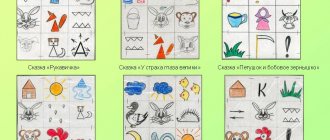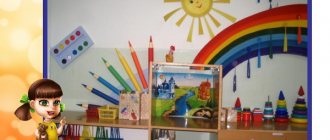Communication type of activity
The main task of a preschool institution is to prepare the child for future adult life. A little person must acquire many skills before he enters society. This is not only the ability to speak or use household objects for their intended purpose, but also proper communication with others.
Most children easily find a common language with both peers and adults. But in every preschool institution there is always a group of withdrawn children who find it difficult to socialize. This behavior may be due to personality traits or parental upbringing. Often, troubles in the family lead to the child withdrawing into himself and not wanting to communicate with his friends. The main types of children's activities are aimed at helping such a child. In a playful way, the teacher helps him open up and establish contact with peers.
Properly organized communicative activities in kindergarten also contribute to the development of the children’s speech apparatus. Activities may include communication with children on certain topics, situational tasks, conversation, and solving riddles. Story-based games are extremely popular among children. In the role of their favorite fairy-tale characters, children become more self-confident and reveal their creative potential.
Labor activity in a preschool institution
In order to exist in a full-fledged society, a child needs not only to learn how to communicate correctly, but also to serve himself. All types of children's activities in kindergarten help children learn independence. They must be able to dress properly and hold kitchen utensils without adult assistance.
Household work is also not in last place. The child must be familiar with the activities of adults. This is especially true for household tasks. Not only the teacher teaches children the culture of life, but also the parents at home. Even in preschool age, parents together with educators must teach the child to be neat. All children must clean up toys and kitchen utensils after themselves. A preschooler must know that all things have their places.
Joint activity between an adult and a child also contributes to social development. The baby quickly learns to solve certain everyday problems and begins to understand the degree of his importance in society.
Play activities in kindergarten
The game can rightfully be called the main activity in a preschool institution. Role-playing games help the development of personality, active ones contribute to the rapid physical development of the child. Any training is much more productive if it is interesting to the child. It is no coincidence that many educational programs are built in the form of a game.
The entire preschool age of a child can be divided into two groups. In early preschool age, games largely acquire an objective character. Children explore the world around them visually. They try to distinguish one object from another and taste it. In older preschool age, children already begin to interact with each other. Role-playing games are becoming popular. And if the teacher organizes the educational process correctly, it will be possible to teach children writing and reading in the form of a game. All types of children's activities in kindergarten should be related to it to one degree or another.
Characteristics of the main types of activities of children and features of their organization in preschool educational institutions
Definition 1
Activity is a process (processes) of active interaction between a subject and an object, during which the subject satisfies any of its needs and achieves a goal.
The leading activity of a preschool child is play. It is in play that a child has the opportunity to “try on” various social roles; in the process of play, children develop speech, thinking, imagination, cognitive processes and form the necessary practical skills.
There are the following forms of organizing the game:
- A role-playing game is a game that involves a certain plot and the distribution of roles between participants.
- Theatrical games are a variety of role-playing dialogues, dramatizations, imitation games, improvisation games and dramatizations.
- Director's games are games that use character toys or substitute objects.
- Fantasy games are games that are mainly represented by TRIZ technologies.
- Games using building materials (cubes, building sets, natural materials, etc.).
- Experimentation games – games using a variety of materials (water, ice, light, paper, magnets, etc.)
- Didactic games - represented by board-printed, word games and games with objects.
- Intellectual development games are games that use puzzles, mazes, etc.
- Outdoor games - represented by plot, plotless, folk, sports, etc. games.
Are you an expert in this subject area? We invite you to become the author of the Directory Working Conditions
Regardless of the type and form of organization, all games are aimed at the personal development of the child and meeting his age-related needs.
Definition 2
Educational activity is a specially organized or independent process, during which a child acquires certain knowledge and skills, expands his own horizons and acquires practical skills.
There are the following types of organization of educational activities:
- Organized partnership (joint) activity between the teacher and children implies the inclusion of the teacher in organized activities on an equal basis with the children. The inclusion of children in joint activities is based on the voluntary desire of the children; any coercion to participate is not allowed.
- Organization of educational activities at different scheduled moments is an educational activity that the teacher organizes and conducts during a walk, in the morning and evening hours and at other scheduled moments during the day. This type of activity can be organized in the form of outdoor games with rules, conversations, hardening, analysis of various problem situations, etc.
- Organized educational activity that involves direct interaction between the teacher and one child, with a subgroup of children or with the entire group. The choice of a pupil or pupils depends on their age, individual characteristics and the type of activity being organized.
- Independent activity of children is carried out at regular moments of the day, lasting at least 3-4 hours a day. Independent activity does not mean that children are left to their own devices. The teacher’s task is to create the necessary conditions for them and organize a subject-spatial environment for productive and interesting independent activity.
Finished works on a similar topic
Coursework Organization of various types of activities and communication of children 490 ₽ Abstract Organization of various types of activities and communication of children 220 ₽ Examination Organization of various types of activities and communication of children 250 ₽
Receive completed work or specialist advice on your educational project Find out the cost
Definition 3
Labor activity is a purposeful activity, the main task of which is to develop in children a respectful attitude towards work, as well as the development of the necessary labor skills.
The labor activity of children can be organized in the form of:
- Self-care is an activity aimed at the child serving himself during hygiene procedures, eating, dressing and undressing, etc.
- Duty - organized in the dining room, in a corner of nature and joint educational activities, when 2-3 children assist the junior teacher or teacher.
- Household work - represented by organized cleaning of the group room, toys, repair of books, clothes, toys, etc., under the guidance of a teacher.
- Work in nature - organized cleaning of the site, procurement of natural materials, snow removal, making bird feeders, work in the summer area (watering flower beds, weeding, etc.).
- Manual labor is the organized activity of making crafts from waste and natural materials, making various attributes for games, etc.



